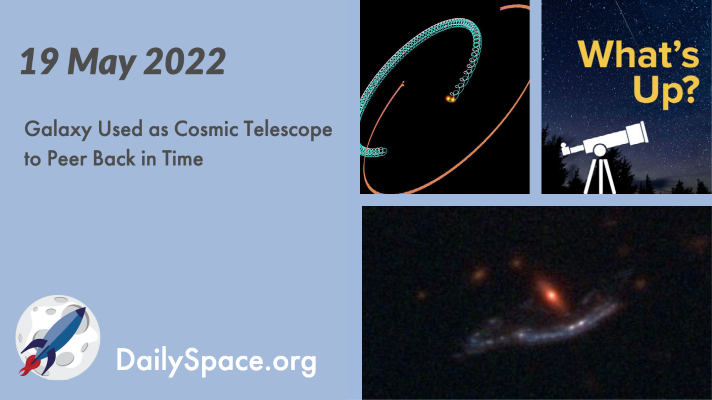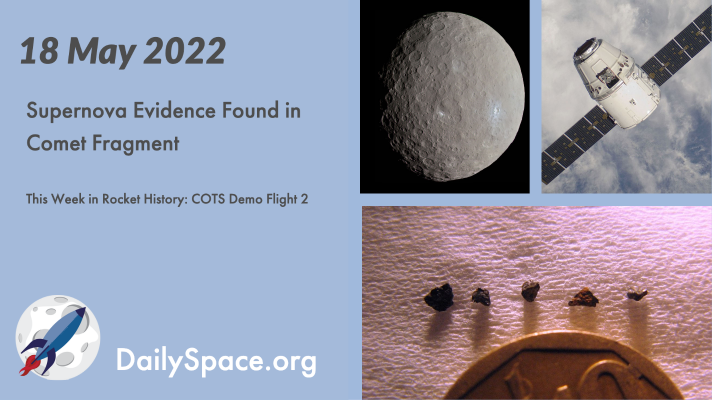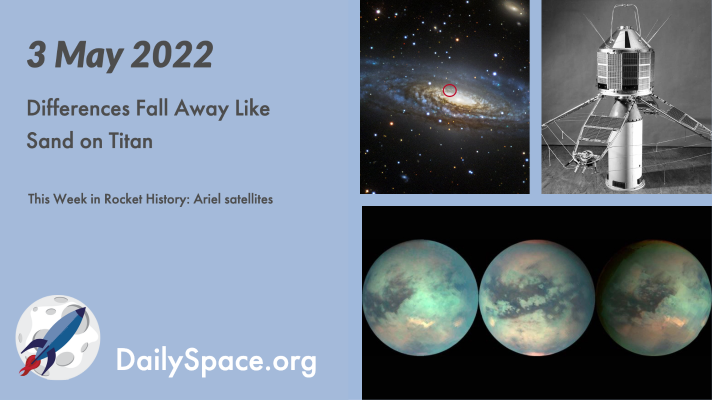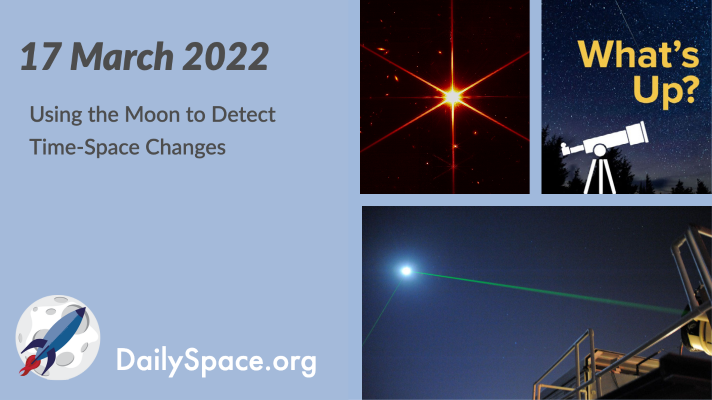
May 20, 2022 | Daily Space, Earth, Galaxies, Moon, Sky Watching, Spacecraft, Star Forming Region, Stars, Supernovae, The Sun
With a groundbreaking technique, astronomers have used a galaxy as a gravitational lens to backlight two hydrogen clouds, peering back 11 billion light-years at our early universe. Plus, volcano water on the Moon, a quadruple star system, and this week’s What’s Up takes a careful look at the Sun.

May 19, 2022 | Asteroids, Comets, Daily Space, Earth, Mars, Our Solar System, Random Space Fact, Rockets, Space History, Spacecraft, SpaceX, Supernovae, The Sun
A forensic analysis of the element concentration found in the Hypatia stone finds evidence in the cometary fragment, which may have impacted Earth 28 million years ago, of a supernova origin story. Plus, Ceres, Mars, and this week in rocket history, we look back at SpaceX’s COTS Demo Flight 2.

May 12, 2022 | Daily Space, Earth, JWST, Mars, Physics, Random Space Fact, Science, Space History, Spacecraft, Stars, The Sun
A ninth-magnitude star in our neighborhood of the Milky Way has been found to contain 65 different elements, including large proportions of heavier elements like gold. This star required either a supernova or a neutron star merger to form. Plus, another solar flare, a strong marsquake, cosmic rays, cookies, and this week in rocket history, we look back at STS-84.

May 6, 2022 | Daily Space, Neutron Stars / Pulsars, Science, Sky Watching, Supermassive Black Holes, The Sun
The flash of a pulsar about 3,000 light-years from our solar system was caused by a ‘black widow’ binary consuming a smaller star. Intriguingly, a third companion star is orbiting the pair, which may have originated near the Milky Way’s center. Plus, the Sun is ramping up, Chandra releases more sonification videos, and this week’s What’s Up is all about occultations.

May 4, 2022 | Daily Space, Jupiter, Mars, Rocket Lab, Rockets, ROSCOSMOS, Space China, Space History, Spacecraft, SpaceX, Starlink, Supernovae, The Sun, Titan
Using spherical grains called ooids, found on Earth in shallow, tropical waters, scientists have found a possible mechanism for the formation of hydrocarbon sand on Titan. Plus, rocket launches, Jupiter and Mars, space explosions, and this week in rocket history, we look back at Britain’s Ariel satellite program.

Mar 18, 2022 | Cassini, Daily Space, Earth, ESA, JWST, Mars, Moon, Physics, ROSCOSMOS, Rovers, Saturn, Sky Watching, The Sun
Scientists propose using changes in the distance from the Earth to the Moon and measured by lasers as a way to detect the phenomenon of gravitational waves. Plus, JWST is working, ExoMars is at risk, and in this week’s What’s Up, we learn about looking for zodiacal light.








 We record most shows live, on Twitch. Follow us today to get alerts when we go live.
We record most shows live, on Twitch. Follow us today to get alerts when we go live.